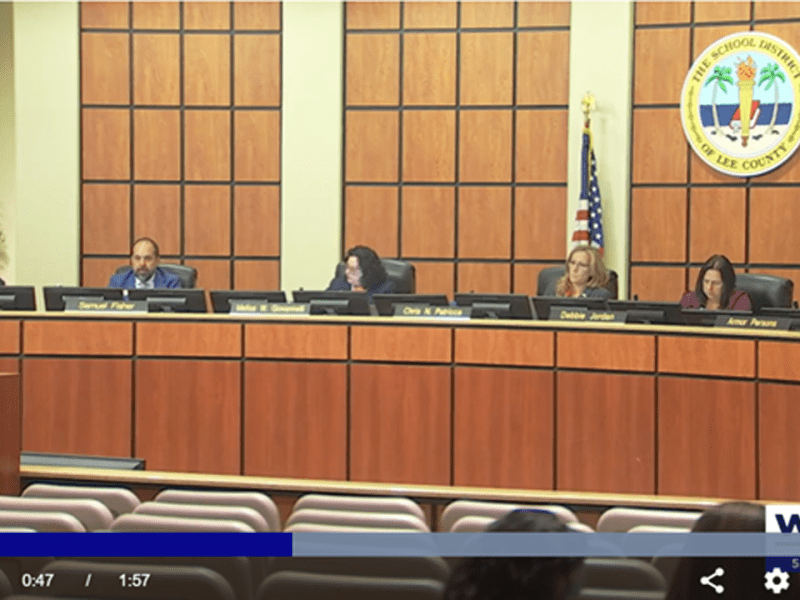New research shows how teacher turnover impacts students of color at Duval schools
Florida Times-Union | by Emily Bloch | February 23, 2021
The Duval County Public Schools workforce is significantly less diverse than the student body. And while the district is on pace with national statistics when it comes to teacher recruitment and retention, teacher turnover disproportionately affects low-income students of color, new research from the Jacksonville Public Education Fund shows.
On Tuesday, the nonprofit shared its findings at a webinar and announced a partnership with Duval County Public Schools to develop strategies that would improve diverse teacher recruitment and retention.
Also, school district data shows that lower school performance is linked to schools with teachers with less experience.
“I graduated from UNF and started my career here,” Superintendent Diana Greene said during the webinar. “As a first-year teacher, I felt so alone and didn’t understand the intricacies of teaching.”
Greene said it took leaving Duval County and starting at a new school district that had an established teacher mentorship program to make things click for her.
“It taught me that we have to understand what teachers are coming into when they first join a district,” she said.
Duval teachers’ experience below Florida average
In an analysis of three years of data from the school district, Jacksonville Public Education Fund revealed that Duval County’s teacher retention rate is about 84 percent year-to-year across the entire district and about 75 percent year-to-year in the average school. The district said these numbers are on pace with national statistics.
Teacher retention rates aren’t universally tracked the same way at every school district, making those statistics hard to compare. However, data collected by the Florida Department of Education shows that Duval County Public Schools teachers have an average of 10.28 years of teaching experience. For context, teachers statewide have an average of 11.75 years of teaching experience.
The study showed how teacher turnover disproportionately impacts low-income students of color.
Elizabeth Krajewski, Jacksonville Public Education Fund’s Senior Manager of Data and Research explained how exposure to a Black instructor decreased the likelihood of a student of color dropping out. She added that the likelihood of implicit bias also goes down when students are exposed to a diverse mix of instructors.
But statistics show that in Jacksonville, Black teachers make up about 29 percent of total teachers while Black students make up about 45 percent of total students. And Black male teachers make up less than 6 percent of the teacher workforce.
“This is not only a Jacksonville issue, this happens in every single city you go to — you’ll see that disparity, especially with Black male teachers” School Board member Darryl Willie said. “There are systemic things that are happening that decrease the funnel. To make sure folks can actually end up in the classroom, you have to make sure enough Black male teachers are going into the funnel.”
Willie said for that to happen there has to be a focus on intentional recruitment — both in traditional formats, like local universities, as well as non-traditional routes including recruiting from other fields.
He added that he remembers when he first started teaching, he asked if students had seen a teacher that looked like him before. Most said no. Some would even slip up and call him “Dad” because they hadn’t seen another Black male figure in their life like that before.
Lower grades traced to teachers with less experience
Jacksonville Public Education Fund’s research also showed that higher-performing schools with lower grades have teachers with less experience and schools with more students that are eligible for free and reduced lunch experience less teacher retention than schools with fewer students eligible for free and reduced lunch.
“For every 10 percent increase in students eligible for free and reduced lunch — which is a proxy for poverty, there is a 3 percent decrease in teacher retention,” Krajewski said.
So, how will the school district recruit new personnel?
Victoria Schultz, Duval County Public Schools’ Assistant Superintendent of Human Resource Services, mentioned the district’s existing partnerships with college education programs and mentorship services. She also cited Duval County Public Schools’ increased starting salary — $45,891 — calling the boost “significant.”
Melanie Moore, the Senior Director of Business Intelligence at JAXUSA, said that compared to other large Florida school districts and Atlanta, Duval Schools’ salary stretches further because of Jacksonville’s lower cost of living. For that reason, she said the district should target recruiting efforts teachers who currently live in Miami and Orlando.
“It’s like getting an automatic raise if a teacher moves to Jacksonville,” she said.
Jacksonville’s teachers stretched by low pay
Still, a previous report from The Florida Times-Union and USA TODAY shows that cost of living expenses in Jacksonville, while cheaper than areas like Miami or Orlando, is still high for many.
Data compiled by USA TODAY showed that on average, teachers in Jacksonville and other Northeast Florida cities are paying more than 40 percent of their post-tax salaries on housing — experts recommend spending no more than 20-30 percent.
In Florida, only three of the 53 school districts across the state — Putnam, Escambia and Marion Counties — show the percentage of median take-home pay going toward rent at the recommended 20 to 30 percent.
Other findings from the Jacksonville Public Education Fund’s research include that principal turnover was cited as the most important factor for teacher turnover, with principal changes being associated with a 5.6 percent decrease in teacher retention. In turn, schools that serve low-income students are more likely to experience a principal change.
Rudy Jamison, Assistant Director of Urban Education and Community Initiatives, said these issues trace back to the desegregation of schools. He said that schools filling diversity quotas steered teachers of color from being able to apply to work in neighborhoods they felt more comfortable in.
“We need to be more intentional about not only who we’re placing in those schools but how we’re preparing who we’re placing in those schools,” Jamison said. “It’s important for me that students see not only themselves but a professional who cares for them and has high expectations.”
According to the Jacksonville Public Education Fund, its partnership with Duval County Public Schools will work to improve recruitment and retention strategies for teachers of color, especially Black men through a number of strategies including seeking input from stakeholders and working with local colleges and universities, partnerships and leadership. Officials say they know the fix won’t happen overnight, but they’re excited to have the conversation.
“I’m so excited for the opportunity we all have as a collective community so we can address these disparities that we talked about today,” JPEF President Rachael Tutwiler Fortune said.
Photo: The Jacksonville Public Education Fund hosted its Teacher Diversity Research Release on Tuesday. (Clockwise starting from top left: JPEF President Rachel Tutwiler Fortune; School Board Member Darryl Willie; Assistant Director of Urban Education and Community Initiatives, Rudy Jamison; Duval County Public Schools Chief of Schools Wayne Green.) Screenshot






